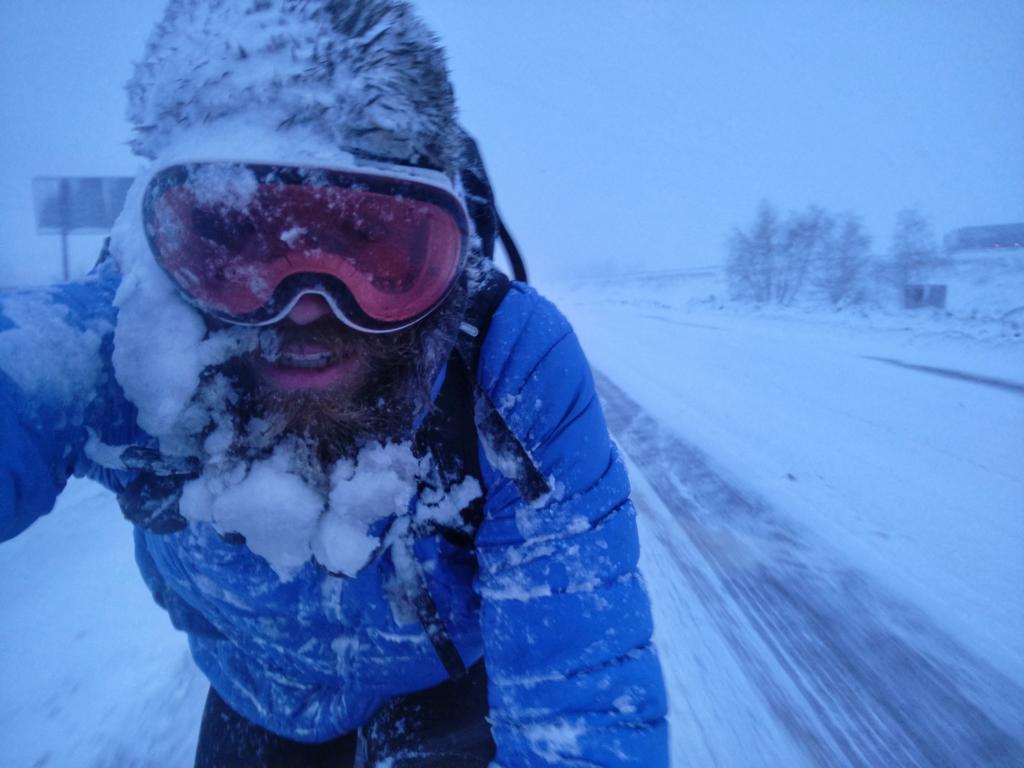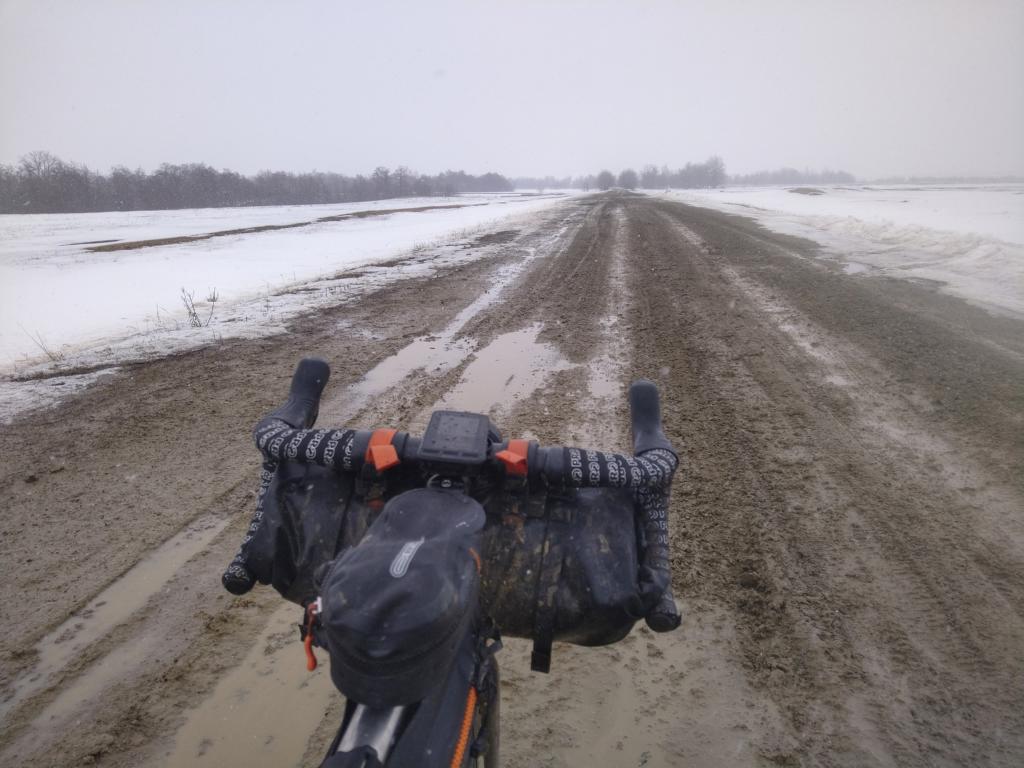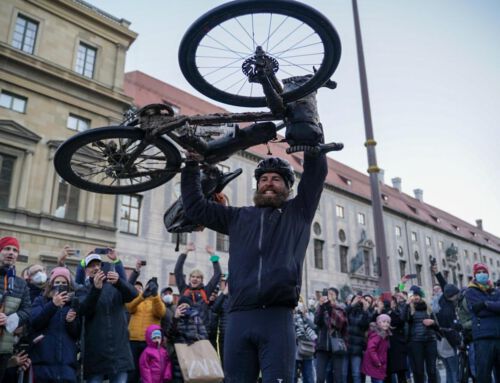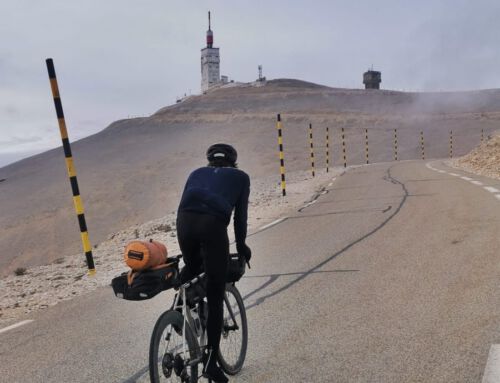The Russian winter makes life as a cyclist a fierce experience.
I’m crossing the highway from Moscow to Rostov, which I cycled in 2019 on the Cape-to-Cape route. For 10 kilometres I stay on the highway, but it is too dangerous for me in winter and so I switch back to smaller roads. As the roads are often not asphalted, I get more and more problems with the deepening mud.
The thermometer drops to minus 10 degrees at night and I spend one or two nights in the tent.
On the main road to Saratov, I drive on the hard shoulder, which is suddenly no longer there. One lorry after another whizzes past me. It becomes life-threatening and I turn back onto a side road.
There are 50 kilometres of mud ahead. It snows all day and the snow remains as deep slush on the road. Huge puddles form, filled with a mixture of snow, water and ice. Once I drive through a puddle where, invisible to me, there is a layer of ice under the water, on which I slip away and land in the puddle. The whole left side is wet and doesn’t warm up properly for the whole day.
After 5 hours, finally asphalt again, but also a heavy snowstorm. Within a short time there is 10 cm of fresh snow on the road and on me. I can only see a maximum of 15 metres and struggle for another 30 kilometres to just before Saratov.
The next day I cross the Volga. The sky is grey, but it is no longer snowing. The snow from the day before is turned into slush by the cars, and it is wet and cold and the road is almost undriveable.
Towards Samara, there is again no alternative to a barren main road leading through industrial landscape and flat fields. A fierce north wind blows directly into my face from the front at 0 degrees.




